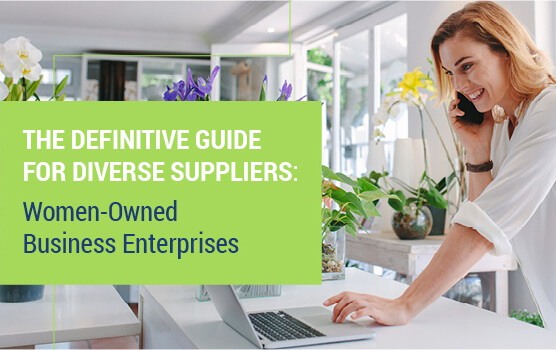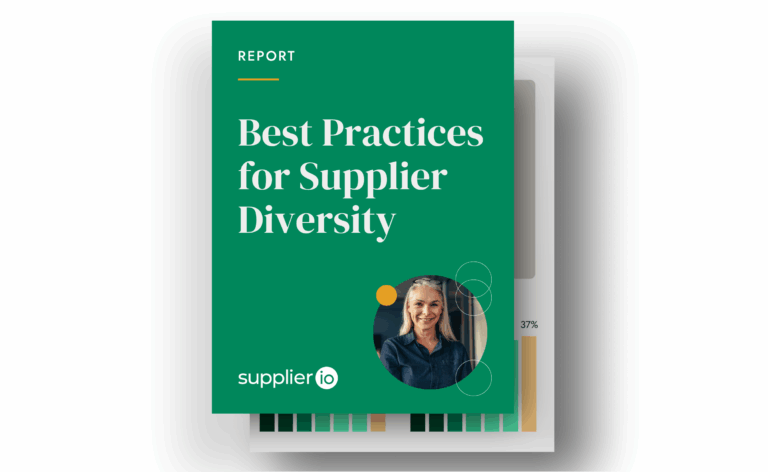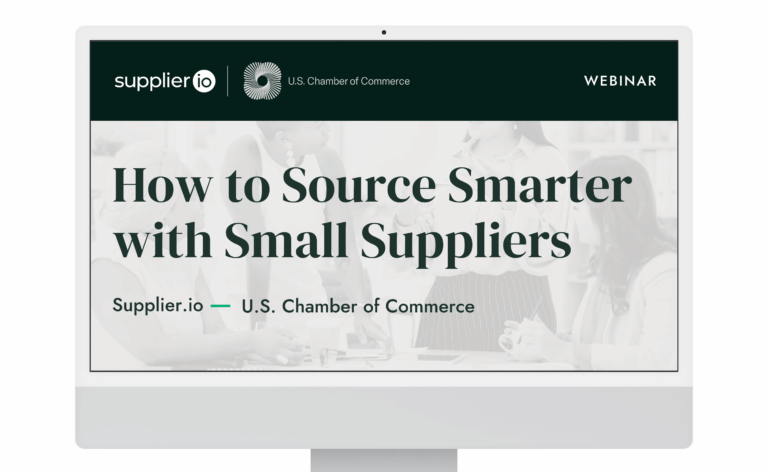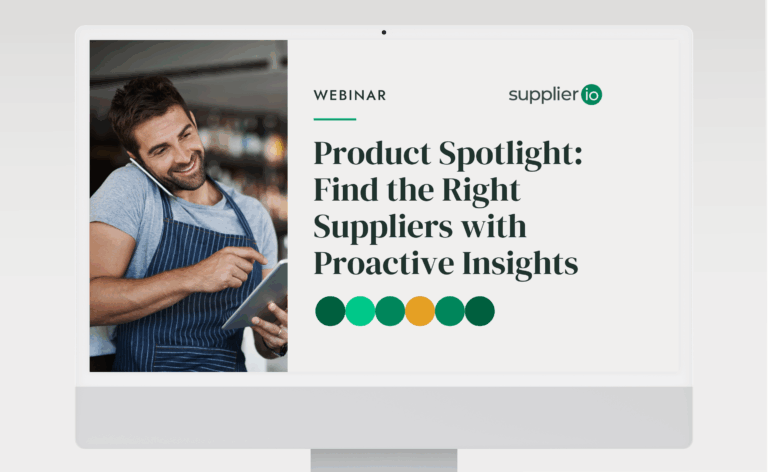The Definitive Guide For Women-Owned Businesses
It’s becoming more commonly known that supplier diversity and women-owned business enterprises (WBEs) are essential for economic success. Let’s look at a few numbers to see why.

There are 11.6 million WBEs in the United States employing 9 million people and, according to the State of Women-owned Businesses Report, which account for 39% and 8% of all U.S. firms and employees, respectively.
Comparative growth paints an even brighter picture. Between 2007 and 2016, the number of WBEs increased by 45%, compared to a 9% increase among all U.S. firms. Furthermore, woman-owned businesses have increased employment by 18% since the recession, while employment for all businesses is down 1% in the same period.
So, it should come as no surprise that women-owned businesses have been a boon to our economy in the past and will continue to play an integral role as our nation’s economy moves forward. Read on to learn more about woman-owned businesses and resources availability.
What is a Woman-Owned Business?
There are three primary types of women-owned firms: women-owned business enterprises (WBEs), women-owned small businesses (WOSBs), and economically disadvantaged women-owned small businesses (EDWOSBs or 8(a) firms). As you may have guessed, each subsequent designation must meet new criteria on top of previous requirements.
Women-Owned Business Requirements:
- At least 51% unconditionally and directly owned and controlled by one or more women who are U.S. citizens
- Women must manage the day-to-day operations
- A woman must hold the highest officer position in the business
Women-Owned Small Business Requirements
All WBE requirements plus:
- Meet small business size standard for primary NAICS code
8(a) Economically Disadvantaged Small Business Requirements
All WOSB requirements plus:
-
- Personal net worth (assets minus liabilities) is less than $750,000 excluding:
- Ownership in business and primary personal residence
- Income reinvested or used to pay taxes of business
- Funds reinvested in retirement account(s)
- Adjusted gross income averaged over three years is $350,000 or less excluding:
- Income reinvested or used to pay taxes of business
- Fair market value of all assets is $6 million or less excluding income reinvested or used to pay taxes of business
- Personal net worth (assets minus liabilities) is less than $750,000 excluding:
Find more information about woman-owned small business categories on the Small Business Administration’s website.
Becoming Certified as a Women-Owned Business
If you meet the requirements to be considered a WBE, WOSB, EDWOSB, or all of the above, your next step is to become certified. Certification, like most things in supplier diversity, has more than one flavor: self-certification and third-party certification (TPC).
While self-certification is far simpler than TPC, many of today’s corporations prefer the latter. Third-party certification provides a corporate supplier diversity program the assurance that a nationally recognized agency vetted your woman-owned business, providing peace of mind in the event of a supplier audit.
You can self-certify via an affidavit or visit one of these Government-approved third-party certification options:
Self-Certification
You have two options to self-certify: download and complete the affidavit form, or follow the Small Business Administration (SBA) self-certification guide. Use the links below to begin certifying your women-owned business.
Self-Certification Affidavit Form
SBA Self-Certification Guide (Under the section titled “Self-Certification”)
Third-Party Certification
Below are a few highly reputably third-party certifiers; you only need to receive certification from one. You can review each of the organizations and choose whom you would like to receive your certification.
- National Women Business Owners Corporation
- US Women’s Chamber of Commerce
- Women’s Business Enterprise National Council
- Education & Training for Women-Owned Businesses
Fortunately, both government and private institutions realize the value of supplier diversity and women-owned businesses, and have created institutions accordingly. Whether you’re just beginning your business, or you’ve been around a while, these educational resources are sure to help.
Women’s Business Centers (WBCs)
Setup and maintained by the Office of Women’s Business Ownership, WBCs offer women-owned businesses comprehensive training and counseling on just about any topic an entrepreneur could ask for. The centers are especially helpful to women who are socially or economically disadvantaged. Find your local Women’s Business Center.
Women’s Business Enterprise National Council (WBENC)
Unarguably the largest private certifier, advocate, and voice for woman-owned businesses, WBENC provides certification & support to female entrepreneurs. Among many of the Council’s services, some that are particularly beneficial include: third-party certification, accepted by the government and every major supplier diversity program; national networking opportunities to help woman-owned businesses meet, learn from, and work with supplier diversity industry leaders; and various educational resources and scholarships.
SCORE
For over 50 years, non-profit SCORE has been helping small businesses (including women-owned) get off the ground through education and mentorship. Because the SBA supports them, woman-owned businesses can take advantage of SCORE’s services at no charge or at very low cost. Visit the SCORE website to find more information on mentors, workshops, and other resources available.
DreamBuilder
Look no further if you’re looking to open your own business but want more education first. With a slogan like “Empowering Women Through Online Education”, it’s hard to misinterpret DreamBuilder’s mission. They offer 14 courses spanning dozens of topics that help women convert their dreams into enterprises. Learn more about DreamBuilder and their courses.
8(a) Business Development Program
The 8(a) Program is a business assistance program designed specifically for small disadvantaged businesses. The program is government sponsored, highly involved, and has some great success stories. Participants of the program go through a four-year developmental stage followed by a five-year transition stage. In additional to the nine-year program, participants have access to specialized business training, marketing assistance, and mentorship programs, to name a few. Find out how your 8(a) women-owned business can participate here.
While access to funding is one of the primary hurdles to true business equality, it is getting easier as the nation recognizes the importance of women-owned businesses. To this end, the Federal Government offers several forms of assistance for WBEs to secure funding through loans and grants. And, thanks to the global reach of the internet, crowdfunding has simplified access to millions of small investors as well.
Funding Your WBE
Small Business Administration (SBA) Guaranteed Loans
One of the many resources the Small Business Administration provides is access to loans. Instead of loaning the money directly to small businesses, the Administration sets loan guidelines with partnering lender organizations around the country. The SBA guarantees these loans will be paid, which means small businesses (like you) generally receive lower rates and fees compared to non-guaranteed loans. Find more information about SBA-guaranteed loans.
USA.gov
Aside from the SBA, the United States offers other government-backed loans and funding resources. More detail on how to get your women-owned business funding or grants can be found here.
Crowdfunding
As its name may suggest, crowdfunding is used by businesses to pull small investments from a large number of investors – unlike traditional investments made by a handful of people. Many small businesses have found success exercising this type of investment strategy. So much so, that crowdfunding sites have become a prolific way to raise money for any business idea. The SBA provides more detail on how to successfully crowdfund for your women-owned business.
Contracting Opportunities for Women Entrepreneurs
Thanks to the rise of supplier diversity spend requirements within the Federal Government and many of America’s top corporations, there are contracting opportunities for every imaginable industry, niche, and service out there. Simple being a women-owned business will surely open up the contracting doors, but we recommended being certified by WBENC or another WBE certification agency. Once certified as a WBE, it’s time you leverage the certification to gain access to contracting opportunities.
Supplier Registration Platforms
Similar to the federal government, America’s top corporations require their procurement departments to spend a certain percentage with diverse suppliers every year. To meet this requirement, blue chip firms invest in third-party supplier registration portals to streamline the buyer-supplier contracting process. Free registration, seamless communication with potential buyers, and robust opportunity filtering are just a few features a quality platform should provide suppliers. Register your company today to start on the path to working with Fortune 1000 companies.
8(a) Business Development Program
In additional to the training & resources provided by the 8(a) Program, small disadvantaged businesses participants can receive sole-source contracts, up to a ceiling of $4 million for goods and services and $6.5 million for manufacturing. What may be an even greater aspect of the 8(a) program is a participant’s ability to form a joint venture or team to bid on contracts. This gives 8(a) firms the ability to fulfill larger contracts that they may not be able to alone, while also developing industry relationships. Interested in learning more about the 8(a) Program and its requirements? Find that information here.
Women-Owned Small Business (WOSB) Federal Contracting Program
Recognizing the important of WBEs, the US government set a five-percent contracting goal for women-owned small businesses. This program was formed to achieve that goal. In order to be eligible, a business must meet the WOSB requirements outlined above, and be self-certified or verified by a third-party certification agency. For information about the program, visit the SBA’s website (pay attention to the piece about the System for Award Management (SAM) – this is your resource for finding government contracts).
HUBZone Program
Short for Historically Underutilized Business Zone, the Small Business Administration created this program to assist businesses in economically-depressed areas who often face greater business disadvantages. While not restricted to women-owned businesses, the HUBZone program can be a boon to your organization if you qualify. This two-minute video gives a quick overview, as well as details on how to participate in the program.
We’re Here to Help Women-Owned Businesses
There is no shortage of valuable resources for women-owned businesses, you only need the proper motivation to leverage them. While this list isn’t all-inclusive, we hope it provides a strong starting point to creating the business of your dreams. We are here to help support women-owned businesses.




